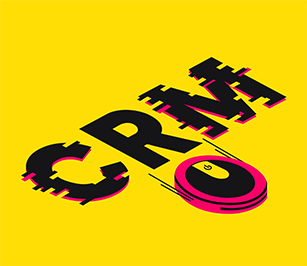There are some things we like dirty – martinis, jokes, and chai lattes spring to mind. But one thing that’s not better when it’s dirty? Data. Even though it sounds like something that should be fun, dirty data – data that’s inaccurate and/or needs to be updated– is actually a big problem for businesses. Like […]
There are some things we like dirty – martinis, jokes, and chai lattes spring to mind.
But one thing that’s not better when it’s dirty? Data.
Even though it sounds like something that should be fun, dirty data – data that’s inaccurate and/or needs to be updated– is actually a big problem for businesses. Like 15-25%-of-annual-revenue big.
According to Salesforce, 90% of contact information in the average CRM is incomplete. On top of that, 74% is outdated, and 25% is made up of duplicates. Ouch. That’s gotta hurt your go-to-market. And it does.
Think about it. Data is important to so many critical GTM functions, like prospecting, forecasting, closing business, developing your ideal customer profile (ICP), , audience segmentation, and lead routing– just to name a few.
Dirty data is obviously a big deal, so let’s talk about it.
What makes data dirty?
Over the course of a single business day, a lot can change with the quality of your data. According to Dunn & Bradstreet, even just a half hour is packed with changes. In the time it takes you to eat lunch, 20 CEOs leave their jobs, 30 new start-ups launch, and 120 company addresses and 75 phone numbers change.
If that seems like a lot to stay on top of, you’re right. And that’s not the only way data can get dirty. Here’s all the types of dirty data:
- Stale data: As you’ve already seen, data goes stale faster than you can spell out the words that make up “CRM.” There are a lot of shifts in the business world, from job changes to company acquisitions, that can seriously affect the quality of your data. A B2B database decays at an average rate of 2.1% per month. Even if that doesn’t sound like a lot at first, it adds up real fast. By the end of the year, that’s a quarter of your contacts.
- Insecure data: Data security and privacy laws are being established left, right, and center. It’s a lot to keep track of, but you have to: there are steep fines for non-compliance, not to mention the potential hit to your reputation. Staying on top of compliance helps your business stay ahead and keeps that data clean.
- Inconsistent data: Without standardization, your data is going to look like a mess. Multiple versions of the same elements can exist across different records in your system. If you don’t have a clear system for inputting, organizing, and maintaining data, then your CRM will contain inconsistencies– making it pretty unreliable.
- Too much data: Just like a dragon guarding its pile of gold, it’s tempting to hoard every bit of data you’ve got. But believe it or not, you can have too much of a good thing. Holding onto too much data that’s too old can affect your flexibility and efficiency; not to mention it poses a security risk. Keeping your database sleek is no small part of data hygiene.
- Duplicate data: information can be doubled in a lot of ways. Maybe you have a single contact showing up as an employee of two different companies, or under two different job titles. When your data is duplicated, it’s hard to know which result to trust.
- Incomplete data: When details are unknown or left out of a record, it makes everything downline more difficult. Without a job title, segmentation for that contact gets a lot harder. When critical details aren’t there, even the simplest outreach efforts become a lot more difficult and time-consuming.
How dirty data affects GTM efforts
You’d be hard-pressed to find an area of the business that doesn’t use data in some way, shape, or form. But when it comes to CRM data specifically, the sales and marketing teams are especially vulnerable to the dangers of dirty data.
Marketing challenges due to dirty data
- Getting blocklisted: It’s every email marketer’s worst nightmare: getting caught in spam traps one too many times. If you’ve got bad data on your email lists, you run the risk of getting hard bounces and sending emails to spam traps that internet service providers set up to ID senders using lists of bad data. Too many trips down that road, and it’s hard to go back. You may end up blocklisted and do a number on your domain’s reputation or even get suspended by your email service provider.
- Disrupting the buyer’s journey: Marketing teams are content machines, but that content needs to target the right audience at the right stage of the buyer’s journey. And with dirty data, you could be aiming the wrong content at your prospects and customers.
- Using failing buyer personas: If your data isn’t up to snuff, your messaging won’t hit the way it needs to. When you’re running sales plays or generating content directed to specific buyer personas, you need to know what you’re working with. If your CRM has inaccurate persona information, your campaigns won’t hit the way they need to.
Sales challenges due to dirty data
- Wasted time: Every time a sales rep hits a dead end by calling a wrong number or emailing an outdated account, they’re wasting valuable time that they could be using to sell. According to a survey we conducted, sales development representatives (SDRs) report that 20% of monthly outreach calls don’t turn into sales. Many of these failed calls are due to following data down the wrong path. That means SDRs spend 45.5 hours each month on outreach efforts that ultimately go down the drain.
- Bad customer experience: Dirty data can lead to issues like misspelled names, undelivered messages, account/contact mix-ups, and duplicate messages. Yikes. These kinds of problems can turn off prospects – and current customers – leading to missed quotas, churn, and overall missed revenue. In our own survey of sales professionals, we found that 52% of companies believe that wrongly targeted outreach, which can occur as a result of dirty data, contributes to an ongoing loss of sales.
- Declining morale: When SDRs call the wrong number or reach the wrong person on a consistent basis, it gets frustrating. They’re wasting valuable time and energy on dead-ends. And since most sales salaries are commission-based, anything that makes selling difficult is going to be a hit to their morale, especially if it happens regularly.
So what do you do about dirty data?
Just like stained clothes or dirty dishes, thankfully your data can be cleaned. It doesn’t have to stay dirty forever. So what’s the equivalent of dowsing your data in Dawn soap and scrubbing away?
There are a few things you can do to get that data clean and keep it that way:
- Develop data standards and stick to them. Better habits will translate into better data. Whether it’s a minimum number of characters required for business addresses or a specific way of formatting information, standardizing your data practices will make your database much cleaner.
- Come up with archive guidelines. Both data hoarding and stale data can be overcome by instating standards around when and how to archive data. Keeping your data fresh keeps it clean.
- Last but not least: enrich your CRM data. One of the most powerful ways you can get your CRM data looking spiffy in no time is with automated enrichment.Think of it as the roomba of your Salesforce account – a hands-off, effective way to clean house in your database. CRM Enrichment tools can turn your dirty data into refreshed opportunities in a matter of minutes, instead of the hours it would take to try and comb through all your data manually. With enrichment, you don’t just clean your data – you enhance it with details like company name, location, and industry and contact job title, seniority, and department – and most importantly, up-to-date contact information.Lusha’s CRM Enrichment automatically enriches both new and existing records in your Salesforce CRM and helps you save valuable time on qualifying contacts so you can focus on engaging with your ideal personas. You’ll get the most accurate and up-to-date information on your prospects, instantly helping capture those relevant prospects for laser-targeted outreach. All of this leads to productive workflows and a more efficient pipeline – at scale.
It’s a process, but with the right investment of time and effort, you can make that data sparkling clean again. A study found that 75% of companies who decreased their investment in data noted a decline in sales and marketing performance. But on the flip side, a whopping 94% of those that increased their data investment saw improved performance of their sales and marketing efforts.
That means there’s a light at the end of this tunnel, and dirty data doesn’t have to hold you back.
Key takeaways
- Dirty data is data that is incomplete, stale, duplicated, hoarded, insecure, inconsistent, or duplicated.
- Sales and marketing teams – as well as up to 25% of annual revenue – are negatively impacted by dirty data.
- To counteract dirty data, implement standards around data entry and storage, and consider investing in automated data enrichment.


